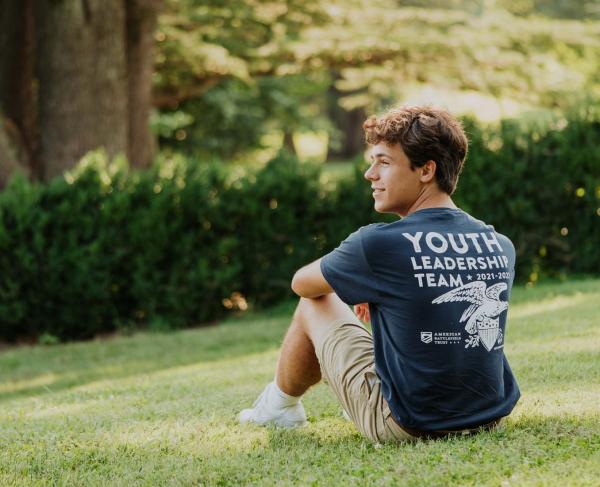An Interview with Kristina Dunn Johnson
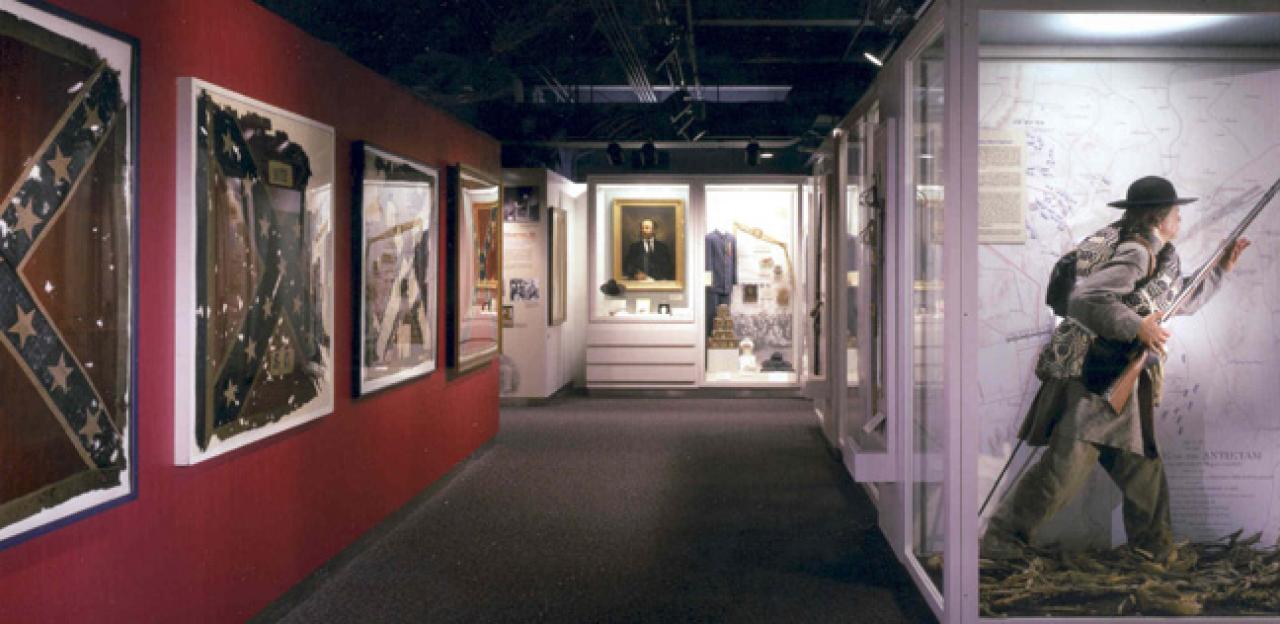
The Civil War Trust recently had the opportunity to talk with Kristina Dunn Johnson, Curator of History at the South Carolina Confederate Relic Room and Military Museum in Columbia, South Carolina. The museum is home to a wide variety of artifacts from throughout the military history of South Carolina, and will be hosting several special exhibits as the Civil War Susquecentennial continues.
Civil War Trust: What is the SCCRRMM and how did it get started (and who came up with such a long name!)?
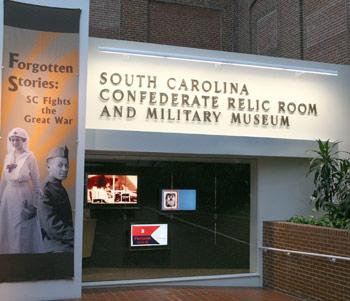
Kristina Johnson: The South Carolina Confederate Relic Room and Military Museum was founded in 1896 by the United Daughters of the Confederacy. The ladies wanted to establish a museum in South Carolina in order to keep artifacts local and not have everything sent up to the newly established Confederate Museum in Richmond. Our museum started as a small one-room collection on the University of South Carolina campus before being relocated to the SC State House, where it stayed for years and started receiving financial assistance from the state government. We are now a state run agency and accredited by the American Association of Museums.
Although the women initially began by collecting Confederate artifacts, they soon started taking in artifacts from additional wars. The new (LONG) name reflects our tradition of collecting, preserving, and promoting the Palmetto State’s military heritage from the American Revolution through the current wars in Iraq and Afghanistan.
Can you give an overview of the collections and exhibitions? What are some of your favorites?
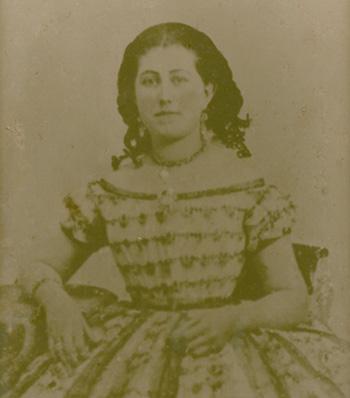
KJ: Our collection has about 7500 artifacts as well as an archives and research library. Although our main emphasis is the Confederate War, we have substantial Spanish-American War, Mexican Border Campaign, and World War I collections. I have a number of favorite objects, so it’s hard to pick just a few! One of my favorite displays is that of Malvina Gist Waring who was a war widow, Confederate bank note signer, and later helped to found our museum. I also like the unusual things people might not realize that we have- for instance, we have the only surviving South Carolina United States Colored Troops flag, Sgt. Richard Kirkland’s rifle, a bullet-struck Bible, a Berdan sharpshooter’s knapsack captured by a Confederate soldier, and even General Beauregard’s tooth! We also have more modern artifacts, such as a palmetto state flag sewn out of Marine camouflage by an Iraqi woman. It is displayed next to our earliest flag, painted for a militia company in 1833. Recently, we acquired the wartime letters of Steve Flaherty, who was killed in Vietnam. His story just made international headlines when his letters were discovered and became the first official artifact transfer from the Vietnamese government back to the United States.
I think one of our strengths as a museum is that most of our artifacts are directly related to an individual. So, when you come here you won’t necessarily see a wall of guns, but you’ll see specific guns carried by specific people with stories attached to them. It’s because most of our collection was donated by service men and women or their surviving family so we have that information intact. You’ll also see a good amount of homefront objects since that reflected the wartime experience of the women who began the collection.
The museum also has an exhibit on early South Carolina Civil war banners. Can you tell us about it?
KJ: We have about 180 flags in our collection, 74 of which are Confederate (plus one Union flag). This is the largest collection of South Carolina Confederate flags. We have been working very closely with the Sons of Confederate Veterans and other organizations to help preserve these banners. At the start of the sesquicentennial, we wanted a way to showcase our collection, especially many of the newly conserved flags that had not been displayed. Furthermore, when people think of the “Confederate Battle Flag” there are often a lot of negative associations attributed to the St. Andrews cross style flag. We wanted to teach people about the organized, local efforts to raise Confederate troops and send them off to war- and a great way to do this is through those early company and regimental silk flags. They’re amazing pieces of artwork that tell a story of what the local community wanted to remind their soldiers of when they went off to battle through key symbols and phrases. I especially like the ones that remind them to defend the ladies on the homefront- a constant reminder to the troops to remain strong to their masculine duties or else deal with the women when they return home!
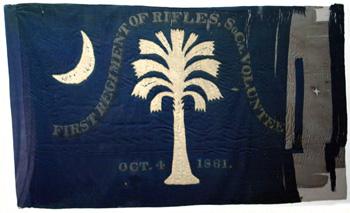
Throughout the exhibit, we tell the story of each individual banner while also discussing the larger narrative of the transition from these flags to the St. Andrews battle flags. We try to communicate the importance that these flags took over the course of the four years as color bearers died to protect them and why so many Confederates went to great measures to return them home at the end of the war. Most of these early war banners were donated by the veterans to the museum around 1900 and afterwards would continue to be loaned out for special veteran’s reunions.
What are some of the difficulties involved in preserving these flags?
KJ: Cost! Most flags cost around $10,000 to properly conserve and frame. We rely heavily on donations in order to make that possible. Some of the beautiful silk flags that we have not conserved in our collection will probably take substantially more than this due to their condition.
The museum currently has an exhibit on 3-D Civil War photographs. 3-D movies are becoming popular today, and it seems remarkable that Civil War photos can be rendered in 3-D. Is this some sort of gimmick?
KJ: Nope! It’s completely legitimate- and very popular with visitors and especially school groups. Most of these images were created to be stereocards and to be viewed through a stereoviewer. The photographer would use a camera with two lens set apart at a specified distance. The effect was two photographs with viewpoints similar to the effect one would get by opening each eye separately. When they’re combined through a viewer, it gives the illusion of dimension. This technology is essentially the forerunner to the red plastic view finder and then modern 3D movies. It’s been great to give people the opportunity to view these historic images the way that they were initially created to be seen.
We understand that you have an upcoming exhibit on Confederate trading and blockade running?
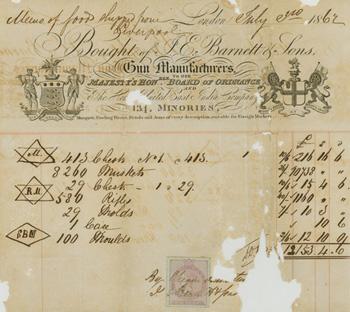
KJ: Our exhibit is based on the discovery of rare Confederate purchasing documents from England that were collected by Colin McRae. In 1863, McRae was sent to Europe to help renegotiate the terms of the Erlanger Loan and to audit the purchasing records of Caleb Huse with S. Isaac Campbell Company. In 2006, our museum was able to purchase the 2500 document collection with the assistance of the living historian community. The invoices detail the range and amounts of supplies being purchased in England by the Confederacy- everything from cloth to rifles to swords and even premade Confederate flags. The invoices also tell what ship the items were being sent on from England. Using research, such as Stephen Wise’s Lifeline of the Confederacy, we are able to then trace the purchase from England and find out if it ended up in the Confederacy and which port it entered.
With this exhibit, we hope to take people on the journey from the smoke-filled English backroom deals, through exotic secondary ports in the Caribbean, slipping past the Union Navy into the Confederacy, and then onto the soldier in the field. We have a significant number of artifacts carried by Confederate troops that will help to demonstrate the impact of the financial and equipment support of the European nations, such as an S. Isaac Campbell knapsack carried by a South Carolinian. Even if there is no direct recognition of the Confederate government, this tacit agreement to allow arms and money into Southern coffers is one of the main reasons that they are able to wage war for so long.
The museum also has an upcoming exhibit on South Carolinians at Gettysburg in celebration of the 150th anniversary of the battle. Could you give us a preview of some of the exhibit’s highlights?
KJ: We’re still in the planning process, but we want to bring the well-known Gettysburg Campaign and personalize it by discussing it on the local level. Essentially, how did it impact South Carolinians? We’re going to start with the cavalry campaign at Brandy Station and work forward through the three days of fighting at Gettysburg, using the South Carolina troops as a lens to understand the battle. We also plan on highlighting the retreat since South Carolinians played a critical role in the action around Falling Waters. We will also discuss the burial problems with Confederate soldier remains on the battlefield and the memorialization efforts. The exhibit will conclude with a solemn wall listing of the names of the approximately 500 men who were killed or mortally wounded during the Gettysburg Campaign.
How does the SCCRRMM’s preservation mission relate to the Civil War Trust’s land-based preservation goals?
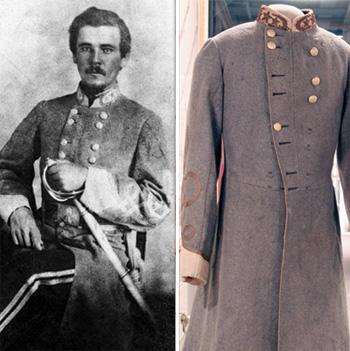
KJ: I think too often we try to subdivide the ways to study history- scholarly formats (books, documents), land (battlefield, historic houses, cemeteries), and museums (uniforms, guns, flags). In reality, all of these have to be combined in order to tell a cohesive story that provides a fuller picture and helps to establish emotional connections for scholars and the general public. For instance, at the Battle of the Wilderness, we know about how General Longstreet was wounded by friendly fire based on the historical record. Riding alongside Longstreet was South Carolinian General Micah Jenkins. Our museum has the frock coat that Jenkins was wearing when he was killed in that same barrage. When people see the coat and hear the story, they are more likely to know about the Battle of the Wilderness, why it's important, and hopefully plan a visit, which is critical when organizations like the Civil War Trust try to preserve new tracts of land there.
If people don’t care about the stories of Civil War era people and places, then they’re not going to spend time, energy, and resources to care for museum collections, archival collections, or historic places.
How can people support the SCCRRMM?
KJ: Well, we would love for people to come visit us. We are a good stopping point on your trip to the beach! We also have a membership program that helps to support our collections and helps for us to demonstrate to our state legislators how important this collection is to the people of South Carolina and beyond. We also take donations for specific conservation projecst. Current projects include our Civil War flags, General James Chesnut’s frock coat, Colonel Elbert Bland’s frock coat and trousers, and the McRae archival collection. Information on visiting and our membership program can be found on our website: www.crr.sc.gov. You can also take a virtual tour of our permanent exhibits and see some digitized archival collections on the site.
Learn More: The South Carolina Confederate Relic Room and Military Museum
Kristina Dunn Johnson serves as the Curator of History at the South Carolina Confederate Relic Room and Military Museum in Columbia, South Carolina. Johnson has a BA in history with a concentration in the American Civil War from Emory University and an MA in public history from the University of South Carolina. While in college, she attended the Gettysburg Civil War Semester program through Gettysburg College. Johnson has previously worked at Gettysburg National Military Park and the Atlanta History Center. Along with numerous article publications, Johnson recently published her first book, No Holier Spot of Ground: Confederate Monuments and Cemeteries of South Carolina (History Press, 2009). Additionally, she has served as a history consultant for the History Channel, South Carolina Educational Television, PBS’s History Detectives, and local media outlets.
Related Battles
23,049
28,063


